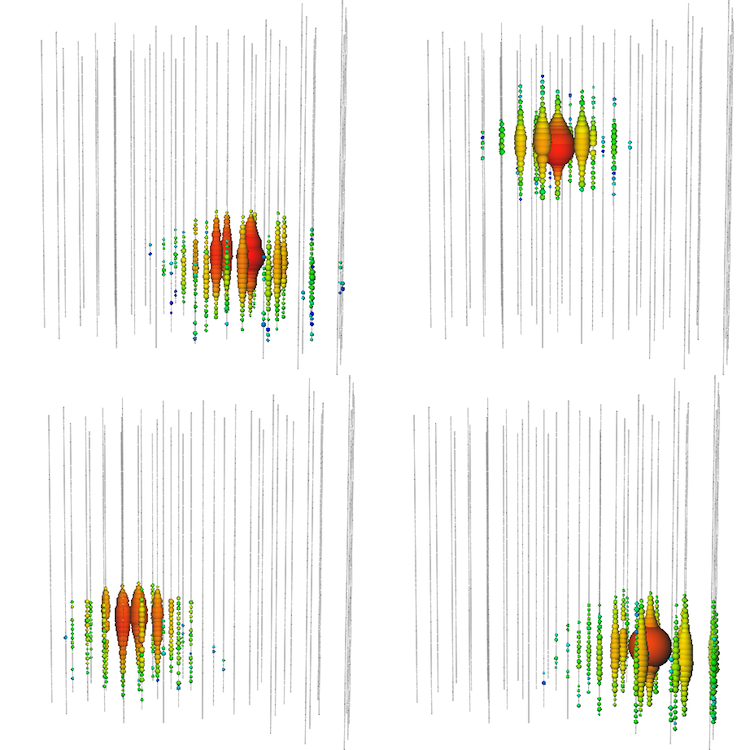Growing evidence of an astrophysical neutrino flux in IceCube: results from neutrino-induced particle showers
Results from several new analyses with partial IceCube configurations are being published these days. The IceCube Collaboration is using several independent methods to build a step-by-step probe for the existence of an astrophysical neutrino flux in all detection channels. Each result published so far strengthens the evidence for an astrophysical neutrino flux that was recently presented by the IceCube Collaboration in Science.
In a new study, the IceCube Collaboration searches for neutrino-induced particle showers in one year of data taken during the construction phase of IceCube, when about half the detector was operational. Above 100 TeV, a 2.7σ excess of events was found, which is consistent with results published by the IceCube Collaboration in Science. The current paper has been submitted to the journal Physical Review D.
This analysis uses three different event selections tailored to different energy ranges. The lowest energy threshold, set at 2 TeV, targeted atmospheric neutrinos to allow a validation of the anticipated backgrounds in the data set. The searches for cascades with energies above 25 TeV and above 100 TeV targeted a harder, astrophysical neutrino flux.
The results of the low and intermediate energy samples are consistent with expectations from the atmospheric background. The excess is seen in the third sample above 100 TeV.

ceCube's detection channels differ in the methods used to separate the small astrophysical neutrino signal from the much larger atmospheric background as well as in their sensitivity to neutrino flavors. While the diffuse astrophysical neutrino flux is expected to be the same for each flavor, unequal or energy-dependent flavor contributions would be interesting, if found, because the flavor ratio would be affected by the production mechanism at the source.
For this reason, searches for an astrophysical neutrino flux in IceCube using different channels will not only allow for confirming the existence of such a flux but also for digging into the sources that produced them, which are expected to be the same sources that produce high-energy cosmic rays.
In another study published a few days ago, the IceCube Collaboration presented results of a search for an astrophysical neutrino flux using only muon neutrino signatures, which show up in the IceCube detector as tracks of sensors that light up. The analysis published today focuses on neutrino interactions that leave particle showers inside the detector. These so-called cascades form nearly spherical outgoing patterns of light. The angular resolution of cascades is poorer than that of muons tracks. But a better energy resolution and an all-flavor sensitivity make them very suitable in searches for a diffuse flux of astrophysical neutrinos, where pointing capabilities are of less importance.
“It’s worth highlighting the unprecedented low background contamination of conventional atmospheric neutrinos and muons below 200 TeV obtained with the data selection proposed in this analysis,” explains Eike Middel, an IceCube researcher at DESY. This region is the one with the highest background in the all-flavor high-energy neutrino searches presented in Science. “Also, the sensitivity towards a diffuse flux of high-energy neutrinos is reached using data from only 50% of the final IceCube configuration,” adds Middel.
Further analyses searching for an astrophysical neutrino flux with cascades will benefit from the completed IceCube detector. With improved background suppression and cascade detection efficiency, they are expected to enhance the significance of these results.
+ Info "Search for neutrino-induced particle showers with IceCube-40," IceCube Collaboration: M.G. Aartsen et al. Physical Review D89 (2014), journals.aps.org, arxiv.org
